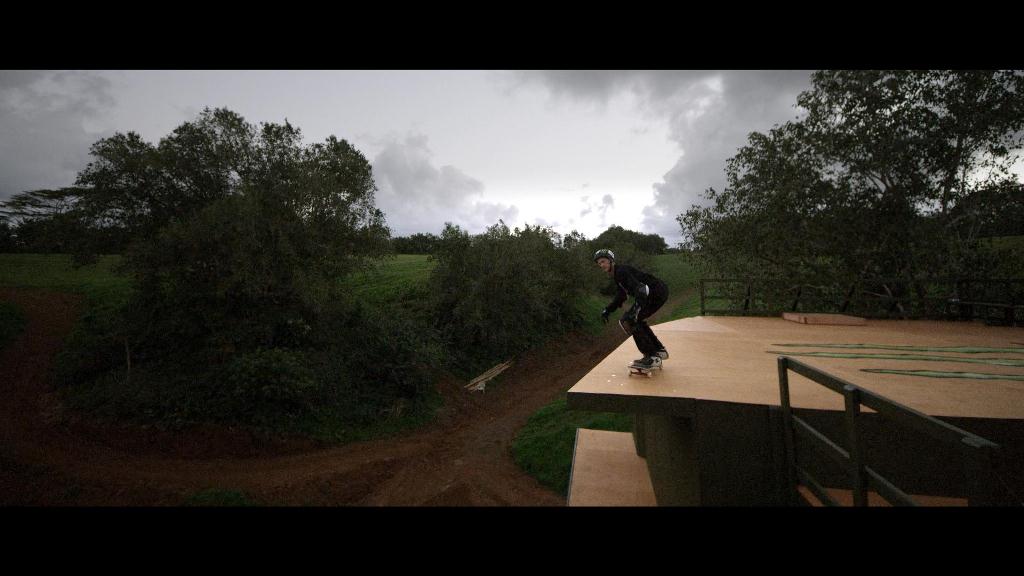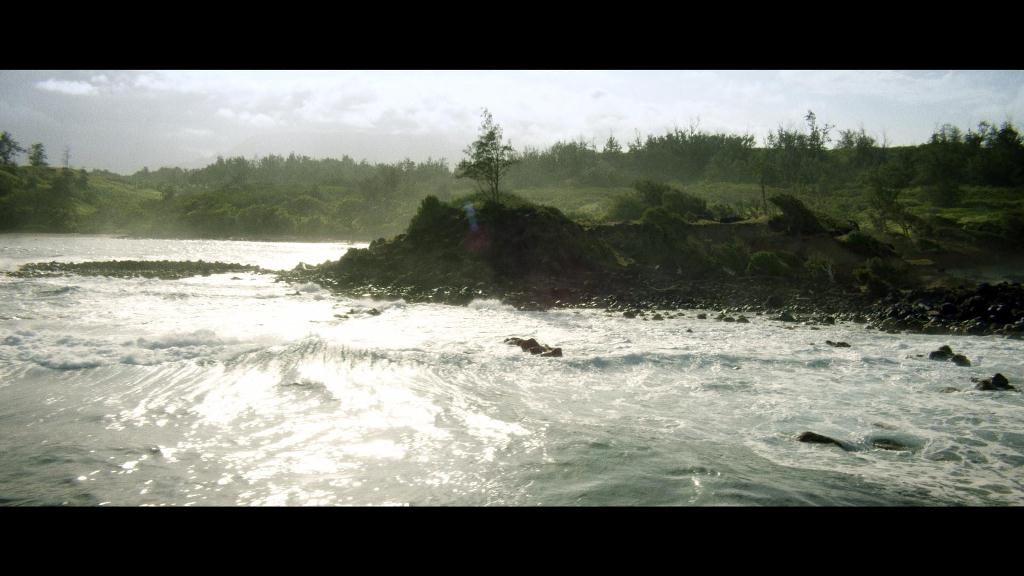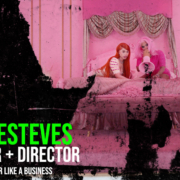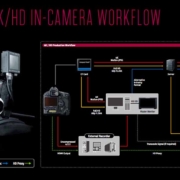The Cameras Behind Waiting for Lightning Doc
Waiting for Lightning, a documentary about pro skateboarding pioneer Danny Way, began production in 2008 with director Jacob Rosenberg at the helm slinging a cumbersome Sony XDCAM on his shoulder shooting B-Roll with its star at the Mega Ramp in Tehatchape, CA. The final frame was shot with a Lomokino Super 35 Movie Maker in April on the island of Kauai, HI. Over the course of those four years, the documentary embraced the modern evolution of camera systems to complete the film.
By Michael Svitak, Elite Team Cinematographer
MichaelSvitak.com
Waiting for Lightning Documentary Project
I was asked to take over the Cinematographer responsibilities in September 2010 as funding from DC Shoes and Bandito Brothers came through and Rosenberg was beginning the bulk of the documentary, Waiting for Lightning’s interview work. The Canon 5Ds were still getting the dust and debris blown off the sensors from the last Bandito production, Act of Valor, as off we set off to capture the journey of Danny Way through the memories of over 50 interviewees. The majority of the shoot took place in North County San Diego. So, a few times a week a talented crew of 5-6 would pile into a passenger van with all the equipment and shoot 2-3 interviews.

Director Jacob Rosenberg interviewing Danny Way. Canon 5D with Leica 21-35mm low angle and Red Epic with Angenieux 24-290mm zoom in back.
On my crew, I had either Camera Assistant Geoff Goodloe or Gaffer Robert Grower and a Camera PA to keep us stocked with fresh CF cards and batteries. The interviews typically lasted about 2-3 hours. Producer Hana Ripperger-Suhler was in charge of all the details, which also happened to include sound mixing the interviews. Rosenberg conducted the interviews and oversaw production.
Camera Package
The primary camera package, donated by Revolution Cinema Rentals for the documentary project, consisted of three Canon 5D bodies, three tripods, a set of Canon “L” series primes, Canon 24-70mm, Canon 70-200mm zoom, two sets of 77mm Tiffen Water White IR ND filters, two SmallHD DP6 on-board monitors, an HP Dreamcolor lighting monitor and 20 Hoodman 16GB CF cards. We used the Canon 70-200mm IS t2.8 for the master interview camera. I would utilize the zoom and give the camera a slight floating feeling at particular points during the interview. Depending on the location, I would set up a 3/4-profile camera into the shadow side of the subject using the Canon 100mm Macro, 135mm, or another 70-200mm.
For the third camera, I would find an abstract wide angle using the 21-35mm ASPH Leica R zoom t3.5 and screw on as much Tiffen Water White IR ND glass as I could to shoot wide open and utilize the magnificent depth of field of the 5D sensor. The other two cameras were lit or NDed to a t4-5.6 split. We chose to use IR ND filters because Rosenberg and I liked the slight green and golden color shift we saw when we put them up on the cameras.
The 5D doesn’t need IR glass in front of the camera for any compensation issues, but it enhanced the green foliage and golden color of the skateboard ramps, commonly in our backgrounds, while not detracting from our subjects’ skin tones so we went with it as a look. To complement the filters, I designed a picture profile for the documentary using the Canon Picture Style Editor and embedded it into the cameras as a User Def setting.
Our typical grip and lighting package consisted of:
- 1 – Kino Flo Parabeam
- 1 – 400 Joker w/ Chimera
- 1 – 800 Joker w/ Chimera
- 1 – LEDZ Mini Par
- 2 – Arri 650w fresnel
- 1 – Arri 1000w fresnel
- 1 – 6 lite tungsten Barger (for recreates only)
- 1 – 3 lite tungsten Barger (for recreates only)
- 1 – Action Packer of misc. Home Depot clamp lights
- 6 – c-stands
- 2 – Coleman stands
- 4 – beefy baby stands
- 2 – grip combo stands
- 1 – 8x frame w/ ears and corners
- 1 – 8x silent lite grid
- 1 – 8x hi lite
- 16 – shot bags
- 2 – floppies
- 2 – platypus clamps
- 1 – 4×2 silver/white bounce board
- 2 – 4×4 hard/soft white bounce board
- 1 – family of 2×3 flags and nets (single, double, silk, solid)
- 1 – 2×3 of 250
- 1 – 2×3 of 216
- 1 – Leko with a 36-degree lens
Lighting Package
The most common lighting setup for interviews was using an 800W Joker bounced and diffused through a 1/2 Lite Grid or 250 frames as a soft book-light or, if the exterior location was extremely bright, we would put a chimera on and go direct with the lamp. To create an edgy backlight, we used a 400W Joker with diffusion and sometimes 1/4 CTO. Our minimal crew did a fantastic job of moving fast without sacrificing quality. We typically had less than one hour from when we arrived at a location to scout a spot for the interview, set up everything, and start shooting.
Format
While editor Carol Martori and assistant editor Rommel Mendoza were assembling the interviews and sifting through countless hours of pre-existing skate footage, the shooting crew went out and shot selected “re-creations” of Danny’s past utilizing a variety of formats. Jacob wanted these to be hand-held macro close-ups mixed with selective focus on major moments in Danny’s life.
Lenses
For these, we decided film would be the best format. We used an Arri SR3 HS16mm with Zeiss Super Speed t1.3 primes for all high-speed work (typically 72-120fps) provided by Panavision Hollywood. For these shoots, I was able to tap into the Hurlbut Visuals intern program to round out my crew. They were stoked to get on-set experience and really helped out so we could complete our days.
Jacob, Hana, and the editorial team worked tirelessly to finalize the documentary for its world premiere at the 2012 South by Southwest Film Festival. Danny’s life has been photographed by a plethora of people. Once the word began to get out in the skate community that a doc was being made about him, we started to get an onslaught of footage. It was not uncommon that after an interview, the subject would pull out a box of dusty VHS tapes. There we would find absolute gold Danny Way footage on the tape.
When the picture was finally close to “locked” (days before the SXSW deadline), Colorist Chris Hall and I holed up in the Bandito theatre on a DaVinci Resolve and spent five full days coloring the picture. It’s safe to say every format imaginable was used in the cut, and Chris and I were tasked with making the edits appear seamless.
Waiting for Lightning
Waiting for Lightning premiered in Austin in March of 2012, but Danny wasn’t done. Another screening was set for April 10, 2012, at the Cinerama Dome in Los Angeles. Danny and Jacob wanted to put a current stamp at the end of the film, alluding to the next endeavors of Danny Way. This would take us to Kauai, HI for a solo skate shoot. It took place on a never-before-seen structure that could have only been imagined in the mind of our protagonist.

Danny about to kickflip into his new skate structure in Kauai. Captured with the Arri 8R lens on Epic
A shoot in Kauai had been in the works since late 2011, but construction and weather delays didn’t allow for us to film anything before the SXSW deadline. One week prior to the LA premiere, we had a window. The weather forecast was rain every day, the same as it had been for the past month. Nonetheless, we were going to send a skeleton crew to the island for six days, just in case the weather broke — the gamble paid off. This particular shoot stressed high speed and mobility, so we chose to use two Red Epic cameras with Arri Ultra Primes and Cooke 10-1 HR 25-250mm zoom (provided by Tom Jordan at HD Planet Cameras).
Skating Cinematography
Thanks to top-notch camera operators Ty Evans, Chris Murphy, and Greg Hunt, we were able to get unbelievable angles skating with Danny on the structure, gorgeous lifestyle pieces, and stunning aerial footage. For some additional angles, I brought along two 5Ds, one 7D with Hot Rod PL mount, and a 1D Mark IV for 12-frame still bursts. We had a set of Leica R zooms and a complete Master Cinema Series rig. Operator Chris Murphy brought along a PL-mounted Canon 11.5-138mm zoom made for 16mm cameras.
This lens came in very handy when we had to punch in on the Epic sensor to record 240fps at 2K. Lenses made for 16mm cameras utilize more glass than 35mm lenses since only a fraction of the sensor is used for recording. Moreover, you can get wider with the 11.5mm. For the extremely wide shots, we used the Arri 8R prime lens shooting 96fps at 5K. With this lens, we could get shots within inches of Danny skating that look magnificent and blown up on the big screen.
Danny skated for about three hours each day in the late afternoon so we could film with the best light. However, our mornings were dedicated to shooting product placement scenarios for ramp sponsors DC, Monster, Bud Light, Hi-Chew, and Coleman.
The Bottom Line
I knew very little about skateboarding two years ago. Christian Hosoi and Tony Hawk were legends. Danny Way invented the Mega Ramp. Maybe I watched some skating at X-Games. But after the first interview, I knew working on this project would be an honor. I can’t say enough about the crew. When it was go-time, we all worked together and got the job done professionally to accomplish Jacob and Danny’s vision.
Samuel Goldwyn Films is releasing Waiting for Lightning theatrically on December 7, 2012, in select cities and will be available for download on iTunes the same day. Click here for theaters and more info. Enjoy!
Schedule 1-on-1 Video Call with Shane Hurlbut, ASC
Looking for mentorship in the film industry? Schedule a 1-on-1 meeting with Shane Hurlbut, ASC today! This is where you can get expert advice from an industry professional on your career or a particular project.
About Filmmakers Academy Cinematographer Mentor Shane Hurlbut, ASC
Director of photography Shane Hurlbut, ASC works at the forefront of cinema. He’s a storyteller, innovator, and discerning collaborator, who brings more than three decades of experience to his art. He is a member of the American Society of Cinematographers, the International Cinematographers Guild/Local 600, and The Academy of Motion Picture Arts and Sciences.
Hurlbut frequently joins forces with great directors: McG’s Netflix Rim of the World and The Babysitter, plus Warner Bros. We Are Marshall and Terminator: Salvation; Scott Waugh’s Need for Speed and Act of Valor; and Gabriele Muccino’s There Is No Place Like Home and Fathers and Daughters. His additional film credits include Semi-Pro; The Greatest Game Ever Played; Into the Blue; Mr 3000; Drumline; 11:14, which earned Hurlbut a DVDX nomination; and The Skulls. Notably, his television credits include the first season of AMC’s Into the Badlands.














As I’ve said many times on other websites (Phil Bloom) technically it looks great but most importantly it’s an amazing story.
If the story doesn’t interest me I don’t care if it’s recorded on film or gaffer tape.
This is a great story.
Colin Ashby, that is exactly right. Thanks for the comments
The killer camera angles and movement take you into the story and make it come alive. Once again, Shane rocks the lens!
Falling from the sky.
Well, this 2.32 minutes were breathtaking. I forget to breathe! Much better than ‘Skyfall’.
Thanks Charles,
Thanks for the comment! Love that you liked it better than “Skyfall.” Try and catch it on the big screen if you can. The Canon 5D footage really looks cinematic blown up. All theaters showing the movie can be found at:
If not, then you can rent it on iTunes.
Thanks for the insight and production details into the film. We watched the film last week and found it very inspirational. Great job!
Chris S, not a problem, thank you for your support. I think Mike Svitak did an incredible job with this film.